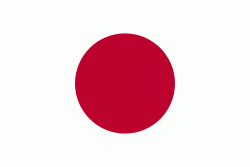Dazaifu (Dazaifu-shi)
Dazaifu (太宰府市) is a city located in Fukuoka Prefecture, Japan, part of the greater Fukuoka metropolitan area. Nearby cities include Ōnojō and Chikushino. Although mostly mountainous, it does have arable land used for paddy fields and market gardening. As of October 2018, the city has an estimated population of 72,231 with 29,355 households and a population density of 2,440 persons per km². The total area is 29.58 km².
The city was officially founded on April 1, 1982, although it has been important historically for more than a thousand years. It was an administrative capital of Fukuoka at around 663 CE.
Dazaifu was the imperial office governing Kyūshū (corresponding to Tagajō in Tōhoku) after it was moved from present-day Fukuoka City in 663.
According to the Taiho Code of 701, an attempt by the Yamato state to exert further control over its territories, Dazaifu was given two principal administrative functions: to supervise the affairs of Tsukushi (present-day Kyushu) and to receive foreign emissaries. Dazaifu hosted foreign embassies from China and Korea. Kōrokan, a guesthouse for foreign embassies, was also established. The Korokan featured in contemporary literature, such as the Man'yōshū, as a place of departure for ocean voyages.
From the Nara period through the Heian period and until the Kamakura period, Dazaifu was one of the military and administrative centers of Japan.
Government records indicate that the disastrous Japanese smallpox epidemic that took place from 735 to 737 first took hold in Dazaifu.
In the Heian period, Dazaifu was a place of exile for high-ranking courtiers. Nobles exiled there include Sugawara no Michizane. His grave is at Dazaifu Tenman-gū.
Dazaifu was sometimes attacked by rebels. At other times the head of Dazaifu himself raised a rebellion. In 739 the powerful nobleman Fujiwara Hirotsugu was appointed to Dazaifu. He soon organised a rebellion, raising 15,000 men. After three months, the uprising was suppressed by 17,000 court troops. In 939 another nobleman, Fujiwara Sumitomo, rebelled against the court. Allying himself with pirates, in 941 he landed in Kyushu. Then he defeated the troops guarding Dazaifu and burned the state buildings. Due to this and other developments, Dazaifu never regained its earlier prestige.
With the invasions of the Mongols and the decline of imperial authority, Dazaifu became less politically significant. In the Muromachi period the political center of Kyūshū was moved to Hakata.
In medieval times, Dazaifu was the base of the Shōni clan. The Shōni were later expelled by the Ōuchi clan.
The city was officially founded on April 1, 1982, although it has been important historically for more than a thousand years. It was an administrative capital of Fukuoka at around 663 CE.
Dazaifu was the imperial office governing Kyūshū (corresponding to Tagajō in Tōhoku) after it was moved from present-day Fukuoka City in 663.
According to the Taiho Code of 701, an attempt by the Yamato state to exert further control over its territories, Dazaifu was given two principal administrative functions: to supervise the affairs of Tsukushi (present-day Kyushu) and to receive foreign emissaries. Dazaifu hosted foreign embassies from China and Korea. Kōrokan, a guesthouse for foreign embassies, was also established. The Korokan featured in contemporary literature, such as the Man'yōshū, as a place of departure for ocean voyages.
From the Nara period through the Heian period and until the Kamakura period, Dazaifu was one of the military and administrative centers of Japan.
Government records indicate that the disastrous Japanese smallpox epidemic that took place from 735 to 737 first took hold in Dazaifu.
In the Heian period, Dazaifu was a place of exile for high-ranking courtiers. Nobles exiled there include Sugawara no Michizane. His grave is at Dazaifu Tenman-gū.
Dazaifu was sometimes attacked by rebels. At other times the head of Dazaifu himself raised a rebellion. In 739 the powerful nobleman Fujiwara Hirotsugu was appointed to Dazaifu. He soon organised a rebellion, raising 15,000 men. After three months, the uprising was suppressed by 17,000 court troops. In 939 another nobleman, Fujiwara Sumitomo, rebelled against the court. Allying himself with pirates, in 941 he landed in Kyushu. Then he defeated the troops guarding Dazaifu and burned the state buildings. Due to this and other developments, Dazaifu never regained its earlier prestige.
With the invasions of the Mongols and the decline of imperial authority, Dazaifu became less politically significant. In the Muromachi period the political center of Kyūshū was moved to Hakata.
In medieval times, Dazaifu was the base of the Shōni clan. The Shōni were later expelled by the Ōuchi clan.
Map - Dazaifu (Dazaifu-shi)
Map
Country - Japan
 |
 |
| Flag of Japan | |
Japan is the eleventh most populous country in the world, as well as one of the most densely populated and urbanized. About three-fourths of the country's terrain is mountainous, concentrating its population of 124.8 million on narrow coastal plains. Japan is divided into 47 administrative prefectures and eight traditional regions. The Greater Tokyo Area is the most populous metropolitan area in the world, with more than 37.2 million residents.
Currency / Language
| ISO | Currency | Symbol | Significant figures |
|---|---|---|---|
| JPY | Japanese yen | ¥ | 0 |
| ISO | Language |
|---|---|
| JA | Japanese language |















